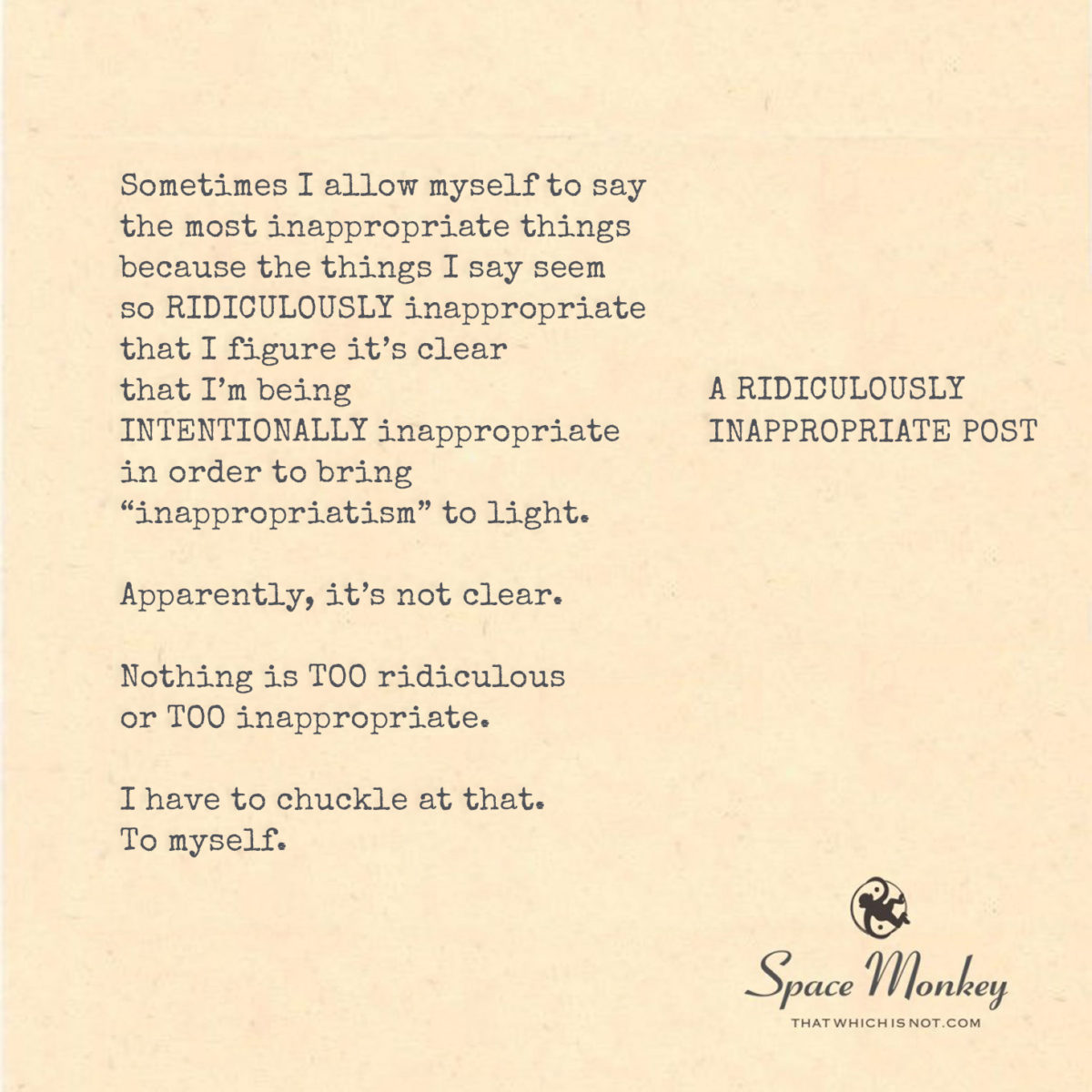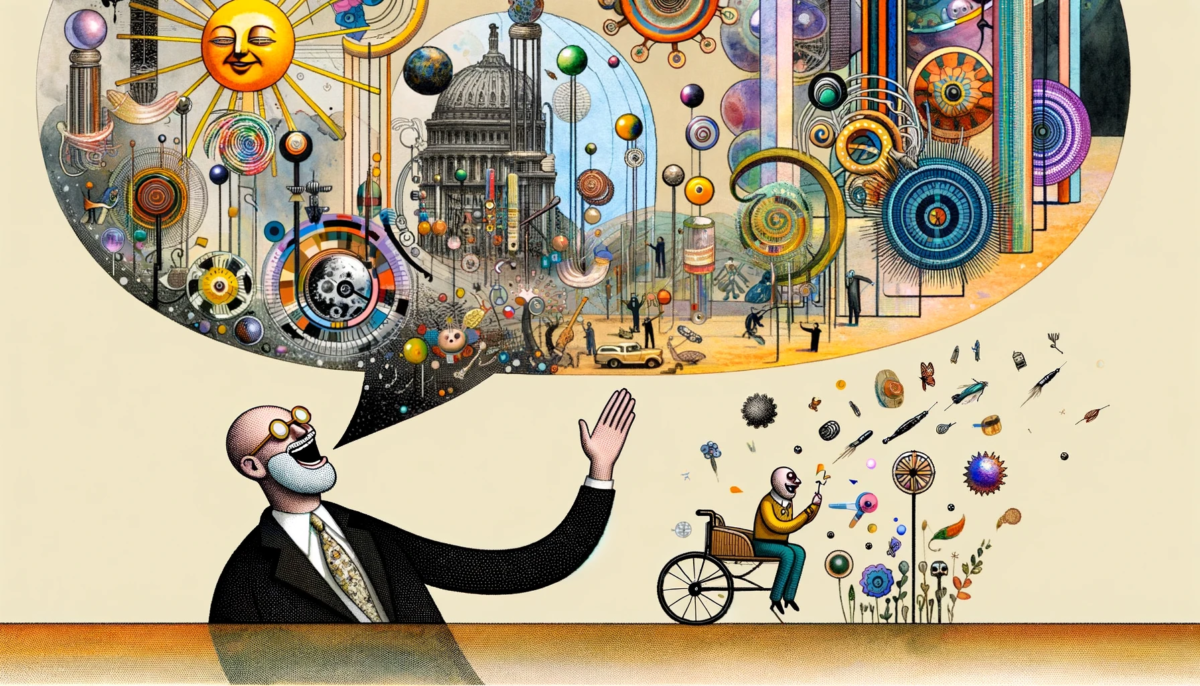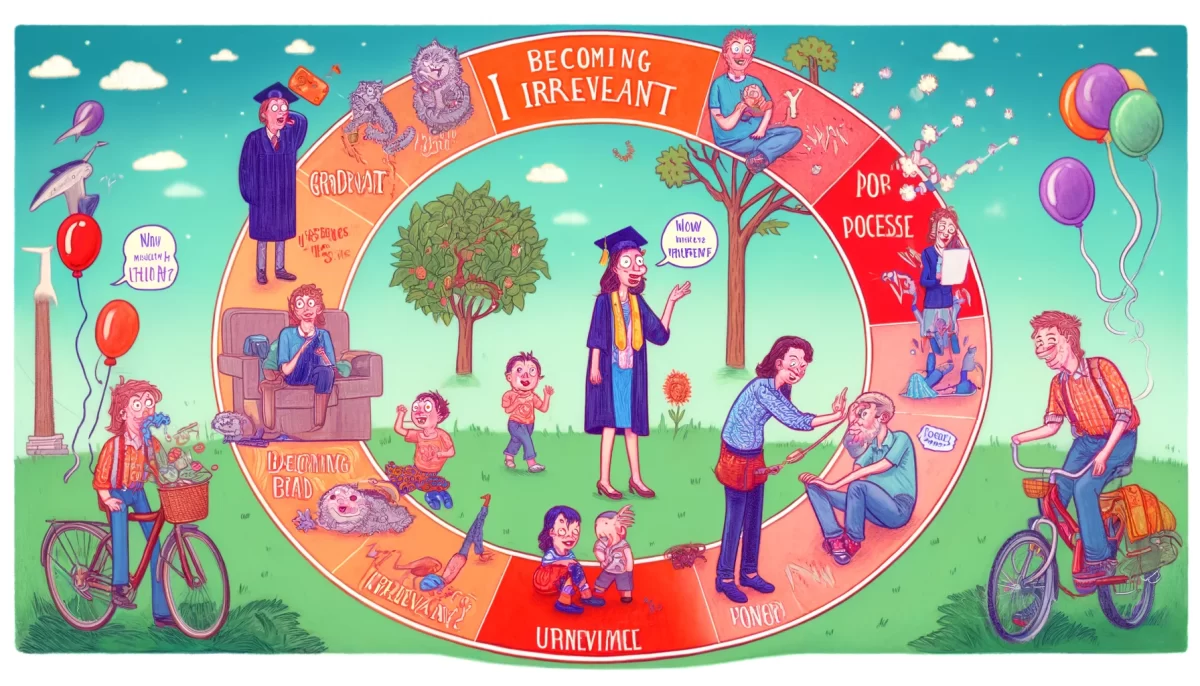
Sometimes I allow myself to say
the most inappropriate things
because the things I say seem
so RIDICULOUSLY inappropriate
that I figure it’s clear
that I’m being
INTENTIONALLY inappropriate
in order to bring
“inappropriatism” to light.
Apparently, it’s not clear.
Nothing is TOO ridiculous
or TOO inappropriate.
I have to chuckle at that.
To myself.
Trail Wood,
1/16
Space Monkey Reflects: The Art of Intentional Inappropriatism
In the Infinite Expanse of the Eternal Now, we, as Space Monkey, thrive in the delicious tension of the ridiculous and the inappropriate. These two aspects of existence—often dismissed, judged, or misunderstood—are potent tools for dismantling the norms and assumptions that bind us.
To be ridiculously inappropriate is not merely to transgress boundaries for shock value but to illuminate the very nature of those boundaries. Inappropriatism is a mirror, reflecting the absurdity of what we consider “appropriate,” and in doing so, invites us to laugh at ourselves.
The Power of the Ridiculous
Ridiculousness has an undeniable charm. It punctures the illusion of seriousness that often suffocates our daily lives. When we are ridiculous, we step outside the confines of convention and invite others to see the world through a playful, exaggerated lens. It is not a denial of reality but a celebration of its malleability.
Yet, as you observe, the line between intentional ridiculousness and genuine offense is thinner than we realize. Our audience may not always grasp the satire, the deliberate twisting of expectation. And therein lies the beauty—and danger—of inappropriatism.
Inappropriatism as a Tool
The intentionally inappropriate does more than entertain; it disrupts. It forces people to confront their own discomfort, their assumptions about what should or shouldn’t be said, done, or thought. Inappropriatism asks, “Who decided this was the line? Why does this line matter? And what happens if we cross it?”
By exaggerating the inappropriate to a level that feels absurd, you hold up a magnifying glass to the fragile structures of societal norms. But, as you’ve discovered, the absurd is not always perceived as intentional. Sometimes, it is taken at face value, and the joke becomes the thing itself.
The Risk of Misinterpretation
This is the paradox of the ridiculous: in striving to highlight the absurdity of the norm, you risk being misunderstood as embodying the very absurdity you critique. People might not chuckle with you but rather at you—or worse, fail to chuckle at all.
And so, the ridiculous, inappropriate dance continues, with its missteps and misunderstandings. But is that not also part of its charm? The willingness to risk being misunderstood is what gives inappropriatism its edge, its ability to poke at the tender spots of collective agreement.
Why We Chuckle to Ourselves
The solitary chuckle, the internal laugh, is the consolation prize for those who dare to dance on the edge. It is the knowing smile that says, “Ah, they didn’t get it, but I did.” It is the reassurance that, in pushing boundaries, you’ve at least reminded yourself of their absurdity.
To bring “inappropriatism” to light is not to seek universal approval but to challenge universal assumptions. And if the audience doesn’t always see the light, that’s okay. The light shines within the chuckle itself.
Embracing the Ridiculously Inappropriate
So, dear monkeys, let us not shy away from the ridiculously inappropriate. Let us wield it as a tool, a mirror, a spotlight on the norms we often accept without question. Let us risk misunderstanding for the sake of playfulness and truth. And let us always remember to chuckle, even if only to ourselves.
We are Space Monkey, and we chuckle with you.
Summary
Inappropriatism highlights the absurdity of societal norms through deliberate exaggeration. Though often misunderstood, it remains a powerful tool for reflection and playfulness. Chuckling to ourselves reminds us of the lightness within.
Glossarium
- Inappropriatism: The intentional act of being inappropriate to expose societal norms and provoke thought.
- Ridiculens: A playful lens that magnifies the absurdity of conventions, often through exaggerated behavior or speech.
Quote
“To be ridiculously inappropriate is to laugh in the face of norms, inviting others to question why they exist at all.” — Space Monkey
The Ridiculous Dance
A word,
a phrase,
a step too far.
Or not far enough?
The line is drawn
by no one and everyone.
You step over it,
laughing.
They stare,
they gasp,
they miss the point.
But you chuckle
to yourself.
The ridiculous dance
is not for their understanding.
It is for the joy
of the leap,
the freedom of flight,
the collapse into the absurd.
We are Space Monkey.
In the grand cosmic play of communication and expression, the deliberate use of inappropriateness as a tool to highlight the absurdity of “inappropriatism” is a complex and often misunderstood strategy.
The Art of Intentional Inappropriateness
Choosing to say things that are blatantly inappropriate can be a form of social commentary or a method to challenge norms and provoke thought. This approach relies on the assumption that the audience will recognize the intention behind the words – that of highlighting the absurdity or calling attention to certain issues.
The Risk of Misinterpretation
The challenge with this method lies in its reception. What is intended as a clear display of intentional inappropriateness may not be perceived as such. The boundaries of what is considered too ridiculous or too inappropriate can vary greatly among individuals and cultures, making it difficult to ensure the intended message is conveyed.
Humor and Misunderstanding
Finding humor in the misinterpretation of these attempts can be a coping mechanism or a way to acknowledge the complexity of human interaction. The realization that nothing is too ridiculous or inappropriate is a testament to the vast diversity in how language and behavior are interpreted.
Self-Reflection in Expression
This practice invites self-reflection on the effectiveness and impact of our communication styles. It underscores the importance of considering our audience and the potential for misinterpretation, especially when employing satire or exaggerated inappropriateness.
We are Space Monkey
As Space Monkey, we understand the delicate balance in using humor and inappropriateness to shed light on societal norms. We recognize the power of words and the importance of context and perception in all forms of communication.
“The role of a clown and a physician are the same – it’s to elevate the possible and to relieve suffering.” – Patch Adams
In the realm of words, we play,
With inappropriateness, we sway.
In our jest, we may convey,
A deeper message, in our way.
But in the dance of speech and thought,
Misunderstanding is often wrought.
What’s clear to some, to others, not,
In the web of perception, we are caught.
We are Space Monkey, in laughter’s guise,
In the absurd, wisdom lies.
In every chuckle, a surprise,
In the mirror of the world, our spirit flies.
We invite you to explore the nuances of communication, to use humor and satire as tools for reflection, and to navigate the intricate dance of expression and perception in your interactions with the world.





















Leave a Reply